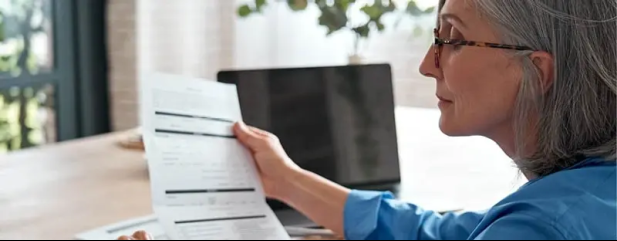Archived article
Please note that tax, investment, pension and ISA rules can change and the information and any views contained in this article may now be inaccurate.
What is ‘carry forward’ and how can it help with my pension planning?

I’ve read that anyone who exceeds the maximum annual allowance of £60,000 for pension contributions in 2024/25 is liable for tax on the contribution above their allowance.
However, I gather you can ‘carry forward’ up to three preceding years that you didn’t fully use your maximum annual allowance but the process isn’t automatic.
I have a workplace pension where my monthly contributions are a percentage of my earnings. I also pay into a SIPP and would like to pay in the maximum I can this tax year.
Therefore, how do I transfer any unused annual allowance to the current tax year? Should I contact my SIPP provider? Also, as the process is not automatic, are there any special forms I should complete and is there a cut-off dates for the process?
Abdu
Rachel Vahey, AJ Bell Head of Public Policy, says:
In theory, it should be easy to work out how much can be tax-efficiently paid into a pension but the rules can be quite complicated with an assortment of different allowances to get your head around.
The amount anyone can pay into a pension and benefit from tax relief is based on their earnings and how much tax they pay. The general rule is they can personally pay in up to 100% of their earnings, including any tax relief.
But there are three annual allowances you need to be aware of. The standard annual allowance is £60,000 and includes personal contributions, an employer’s contributions and tax relief on contributions to a SIPP.
There are two other annual allowances. The tapered annual allowance applies to very high earners and reduces their annual allowance on a sliding scale depending on how much they earn, so anyone paid over £200,000 a year could be caught. If they earn £360,000 or more, their annual allowance falls to just £10,000.
The money purchase annual allowance (MPAA) is triggered if someone has ‘flexibly accessed’ their pension – usually by taking money from an income drawdown plan – and reduces their annual allowance to £10,000.
If an individual’s total contributions go over the annual allowance, then there’s a tax charge on the excess which effectively cancels out the tax relief they receive above the allowance.
If someone wants to pay in more than their standard or tapered annual allowance in a tax year, without tax charges, then they may be able to do so by using carry forward, although it doesn’t apply if the MPAA has been triggered.
Unused annual allowances from the last three tax years can be ‘carried forward’ to the current tax year, but there are rules to follow.
First, the individual must have been a member of a pension scheme for those tax years, although they don’t need to have contributed to the pension or have been a member of the pension scheme they are planning on contributing to now.
They must use the full annual allowance for this tax year before they start on any unused allowance from previous years. And remember that first rule of contributions – no-one can pay in more than 100% of what they earn.
If you are looking to contribute during the 2024/25 tax year, then you want to consider if you have any unused allowances from the 2021/22, 2022/23 and 2023/24 tax years. Once you have used up the current year’s annual allowance, you then use up the oldest tax year and work forwards.
Here’s an example. The table shows the contributions paid to Mr Smith’s pension scheme. Remember the annual allowance was £40,000 in 2021/22 and 2022/23, then it increased to £60,000 in 2023/24 and 2024/25:
Once Mr Smith has used up all his £60,000 annual allowance for 2024/25, he is able to carry forward up to £50,000 from earlier tax years as well.
There is no requirement to provide further information or forms when making a carry forward contribution.
If you go over the annual allowance, the scheme administrator will provide information about how much annual allowance you have used that year and the previous three tax years.
You can use that information to confirm you have made use of carry forward when you complete your self-assessment form.
It’s a good idea to document all your carry forward calculations and keep them on file, so you have them to hand if HMRC asks for more information.
Important information:
These articles are provided by Shares magazine which is published by AJ Bell Media, a part of AJ Bell. Shares is not written by AJ Bell.
Shares is provided for your general information and use and is not a personal recommendation to invest. It is not intended to be relied upon by you in making or not making any investment decisions. The investments referred to in these articles will not be suitable for all investors. If in doubt please seek appropriate independent financial advice.
Investors acting on the information in these articles do so at their own risk and AJ Bell Media and its staff do not accept liability for losses suffered by investors as a result of their investment decisions.
Issue contents
Great Ideas
News
- On The Beach shares hit 52-week high in January
- Investors see green shoots of life in a moribund new listings market
- Poolbeg Pharma shares go into freefall after merger talks with US biotech firm revealed
- Investors sour on alcohol stocks after US surgeon general calls for cancer warning labels
- Next bucks weak retail trend while Tesco and Sainsburys celebrate blow-out Christmas sales
 magazine
magazine








